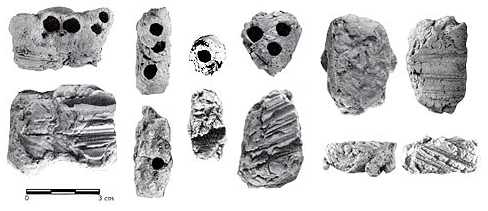
Mud-dauber wasp nests, Range site.

Pieces of mud-daubers nest also give us insights into Mississippian house maintenance activities. Insect holes and the impressions of nests bare testament to infestations of the Mississippian home. Mud-daub pieces that exhibit burning suggest that the preferred method of ridding a house of pests was fire and smoke. Smudge pits in some houses may be evidence of this fumigation technique. Other animals that may have occupied Mississippian thatched roofs and walls include various birds, rodents, and bats.